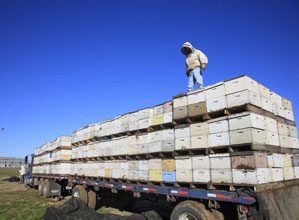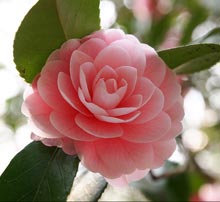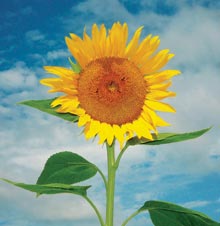 Well, of course it’s better to bee. Let’s start with honey bees. There’s a lot of conflicting information about whether or not honey bees are endangered. The honey bee is actually an immigrant from Europe, Africa and Asia; not native to this country at all, so honey bees are not on our Endangered Species List.
Well, of course it’s better to bee. Let’s start with honey bees. There’s a lot of conflicting information about whether or not honey bees are endangered. The honey bee is actually an immigrant from Europe, Africa and Asia; not native to this country at all, so honey bees are not on our Endangered Species List.
In fact, Colony Collapse, the condition which contributed to the demise of many colonies of honey bees, is on the wane, and the honey bee population is actually increasing! True honey bees, Apis mellifera, are a single species and the only bee which produces honey and lives in hives. It is heartening to note that more and more homes are welcoming honey bee hives to their yards. Back yards’ diversified plantings provide pollen and nectar all year long in the Lowcountry. If you notice a beard shaped swarm in trees, notify the Beaufort/Jasper County Beekeepers Association at 843+384-3803. If you don’t bother the bees, they are no danger to you, but many beekeepers are looking for swarms to populate new hives and they will come and safely remove them.
Mason bees are known as gentle, hardworking bees, and are easy for the homeowner to attract and maintain. Small mason bee houses are made from hollow tubes of bamboo, and as long as you can provide a muddy spot in your yard when the bees are active, they should be happy. You need no protective clothing to watch these small creatures build their solitary nest in one of the tubes. Put your mason house at least at eye level (best to bee-watch), in a warm spot that gets morning sun. Don’t put your bee house near a bird feeder. The birds will love it, but your bee population won’t.
attract and maintain. Small mason bee houses are made from hollow tubes of bamboo, and as long as you can provide a muddy spot in your yard when the bees are active, they should be happy. You need no protective clothing to watch these small creatures build their solitary nest in one of the tubes. Put your mason house at least at eye level (best to bee-watch), in a warm spot that gets morning sun. Don’t put your bee house near a bird feeder. The birds will love it, but your bee population won’t.
Honeysuckle and trumpet vines are planted on my fence, and they are literally buzzing most of the year. I love to stop and watch the bees at work. I am convinced that we communicate, because as I am watching them, they will fly around and hover in place in front of me at eye level, staring intently as if to determine if I’m a threat. Once they’re reassured, they go on about their business. Oddly, after they have done this a few times at the beginning of spring, they never bother again. They seem to recognize me and I’ve never felt an iota of menace from them. Apparently, they feel the same about me. We’re simpatico.
The importance of honey bees for producing honey and as pollinators can’t be denied, but they are 4 times less effective as pollinators than native wild bees. Native bees are the most important pollinators to agriculture.
Pesticides, of course, as well as environmental issues, declining habitat and climate change are all contributors to the continued reduction of bee populations everywhere. While there are over 4,000 species (Yep, 4,000!) of native bees in our country – over 20,000 world-wide – the decline of bee populations everywhere is an increasingly disturbing issue.
What is truly alarming is the unbelievably sharp decline in Bumble Bees, the most important species to agriculture. In 2017, it was noted that the native Bumble Bee population had decreased by 90% since the 1990’s, and it was put on the Endangered Species list. Six other species, native to Hawaii, have recently been added to the list.
The decline of native bees has resulted in the need for an army of trucks to transport millions of honey bees to agricultural areas all over the country when crops are ready to be pollinated. Since they are the only bees which live in hives, they are the only ones which can be transported. 
We shouldn’t have to do this.
In fact, scientists are beginning to think that just such transporting is spreading lethal pathogens and diseases to local bee colonies. But as long as we have monocultures (hundreds, even thousands, of contiguous acres which grow a single crop), the need will only increase. Local native bees cannot survive on the short few weeks a year needed to pollinate monoculture crops.
As gardeners, we can be advocates for the reduction of both chemicals and monocultures, but our personal contribution is closer to home. If you must apply chemicals in your garden, don’t do it when bees are active. Plant a wide variety of nectar and pollen producing trees, flowers and shrubs. Try to have something in bloom year ‘round. In the Lowcountry, that’s not very hard.
This was a sad and disheartening column for me to research and write because there seems to be no rosy outcome. With the merger of big agribusinesses with chemical giants such as the Monsanto/Bayer merger, it seems likely that the uphill battle to stop the way we grow food will get steeper.
I’m probably preaching to the choir, but when did that ever stop anyone? If ever a point needed belaboring, this is it.
If we are to save our bees, all varieties of them, we need to re-educate the people and re-evaluate how we feed our growing population. Since the first humans, ourpopulation has never declined and its exponential growth has already put a heavy burden on our planet to support it. The bees are trying to do their part. Let’s do ours.








